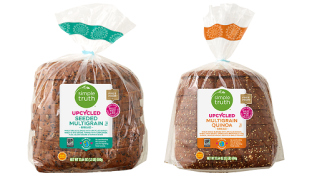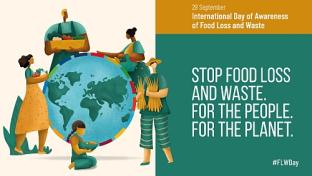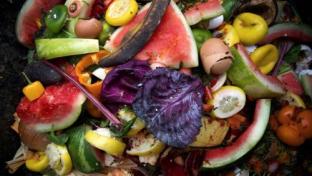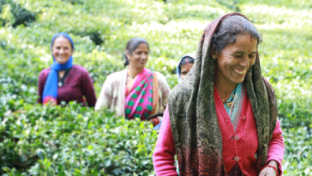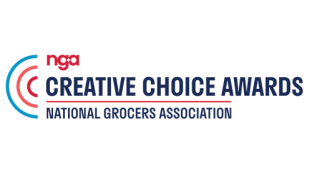EXCLUSIVE: The Importance of Upcycled Foods
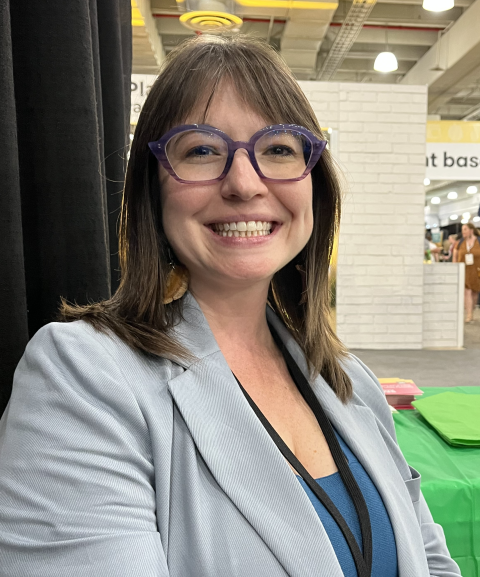
During the Summer Fancy Food Show, taking place June 25-27 in New York at the Jacob K. Javits Center, Progressive Grocer caught up with Angie Crone, CEO of the Denver-based Upcycled Food Association (UFA) at the event’s first-ever Upcycled Food Pavilion, showcasing products from such companies as Barnana, Renewal Mill, The Spare Food Co., Confetti Snacks and Still Good Foods. In a lively conversation, Crone was able to give a brief account of the long history of upcycled products, as well as how UFA helps in the marketing of such products and educates retailers and consumers alike on why upcycling is important, and how the association’s member companies work together.
Progressive Grocer: Recycled foods have grown in visibility and prominence over the past couple of years, but what would you say is really the beginning of upcycled foods? I’m sure there have always been upcycled foods before they became a trend or something that was really on consumers’ radar. Could you talk a little bit about that?
Angie Crone: Yeah, upcycling is really an ancient way of using everything that you have. This is not a new concept in terms of how we think about food or wanting to ensure that all the resources that we’re using are being optimized. I think as time has gone on in our industrialized food system, we got very used to certain cosmetic standards, and we got very used to the most efficient way to get food, which sometimes creates sidestream or byproduct or things that you need to go away because it doesn’t fit in or you don’t want to harvest because they might not be sellable for aesthetic reasons.
That has sort of taken control. Now, in the U.S. alone, we waste 38% of all food that is produced – never eaten – which is kind of a crisis of the environment and also food security. When you think about the uneaten food, that’s about 6% of our greenhouse-gas emission. I think with that knowledge, when we think about impact on our climate, on food insecurity, a lot of companies and individuals are like: “We can’t keep doing this. There needs to be a better way.” So, in 2019, the Upcycled Food Association was founded by companies who were already working in this space. The goal was really to get more companies to think more creatively and innovatively about these food waste streams and turn them into really yummy nutritious products.
PG: How did the certification process come about? How was that created? I assume it’s the first upcycled food certification program?
AC: Yeah, it’s the first and the only third-party-verified certification for upcycled food. It was established in 2021. So, what came before that? I just shared that in 2019, UFA was founded. One of the first things that the companies did was to define what upcycled foods means, because everyone was using sort of different definitions. They unified around a definition, and then said, “Now we want to steward that definition through a rigorous third-party standard.” So they went through a years-long process and started developing that with a coalition of stakeholders and experts in the food and beverage space, certification experts, and we launched in 2021. We now have 450-plus products and ingredients in the market, and collectively they’re diverting about 1 billion pounds of food from being wasted.
PG: Wow, that’s very impressive. How are you then marketing these products that have been through this rigorous certification process and received the certification and are now rolling out to stores? How are you generating consumer awareness for these products, or even retailer awareness? I’m sure there are retailers that need some education on why they should choose these kind of products. How are you marketing these to retailers and then ultimately to consumers?
AC: Certainly, we’re still growing the familiarity of the certification mark, but one thing about having a really recognizable mark is that it helps to reduce the messaging burden for everyone. We’re all communicating the same thing, so when you see that product, you know it’s diverting food from a waste stream. The way that we work with retailers is through a lot of education, through their various teams. How can their marketing teams communicate that tackling food waste can help tackle climate change and meet their consumers’ goals of living a more values-aligned life? We provide education tools for them and in-store assets for merchandising.
One thing that we’ve also done with retailers – we launched it in March – [was] The Upcycling Challenge in partnership with Misfits Market. That was really to galvanize the industry to think creatively around different concepts. We had over 100 submissions to that challenge, and they were all new concepts, which was really exciting. And then we held a pitch slam, and they selected several products to go on their shelves. So we also think about how can we do program-level partnerships with retailers.
On the consumer side, UFA really wants to build out consumer awareness. We do that through partnerships on social media, working with different influencers and media folk, to make sure that the individual knows that they can buy enough of the product wherever they shop, but also, they can do it at home. When you’re in your kitchen, instead of throwing your scraps out, you can make a broth, or, instead of throwing away your banana peel, you can actually throw that into your next banana bread or muffins, and it really boosts the fiber, so [that] also helps [them] to understand nutritional potential. [We do] education and content development around that as well.
PG: Do you feel that at this moment in time, although it’s still relatively early in the upcycled food trend, that these kind of products will eventually become mainstream products that people will reach for as part of their overall concern for sustainability or the environment or food waste, than their being more of a niche item, or something that people need to be educated on?
AC: Yeah, absolutely. One of the beautiful things about upcycling is that it can be applied in every supply chain. Regardless of your industry or the type of ingredient you’re using, everywhere we look, there’s some sort of waste. That means that there’s huge potential for always having a more sustainable substitution effect for every product that you get. When you go to the baking aisle, you can get your regular baking mix, or you can get a more sustainable upcycled baking mix that has the same functionality, the same nutritional benefit, and tastes just as wonderful.
PG: Among upcoming or emerging products, are there any types of products that you’re most excited about in the upcycled space?
AC: It’s really hard to choose. We see a lot of innovation happening in the banana space. We waste a lot of bananas, so there’s a lot of opportunity there. Also in cocoa supply chains, which I think most consumers are pretty familiar with some of the human rights challenges and sustainability challenges already. They may not know that we actually waste 70% of the cocoa pod, but that plus the pulp have a lot of nutrition and fiber that we can capture, and also it provides income for the farmers. So, we’re seeing a lot of innovation there.
Also, brewers’ spent grain is one that probably people are most familiar with, but we’re seeing a lot of opportunity for impact there, big volumes and a lot of different applications. And then fruit and vegetable pulp continues to be an area of opportunity. If you walk around the pavilion, you’re going to see whey; you’re going to see almonds, almond flour, broken almonds that you can’t sell; tomatoes that weren’t harvested because they had a blemish or [were] misshapen. I think that fruits and vegetables, because they’re the most perishable also, we’ll continue to innovate around.
PG: Among the members of your association, are there certain synergies, are there companies that actually work together so that the byproduct of one can be used by another, or things like that?
AC: Yeah, actually we just had a really exciting collaboration with Salt & Straw, which is an ice cream shop based in Portland, Ore. They started to use upcycled ingredients from a variety of our members. They have a five-flavor set for the month of June that they’ve launched, so we’re seeing a lot of collaboration like that. But I think the beauty of our membership is that it really is from the farm to individuals who really care about the cause, too. And part of what we try to do is really facilitate that marketplace of exchange of ideas. We see a lot of activity of people saying, “Hey, I have these carrots; can someone use them?” And then someone says, “Hey, I need carrots; do you have any?” So, we’re seeing that sort of idea exchange take place.
PG: I love that. It’s like the ultimate upcycled mashup.
AC: Yeah, it’s really fun. My dream is definitely one day to have a more formalized workplace to make that process much easier as well.
The Summer Fancy Food Show is produced by the New York-based Specialty Food Association.



